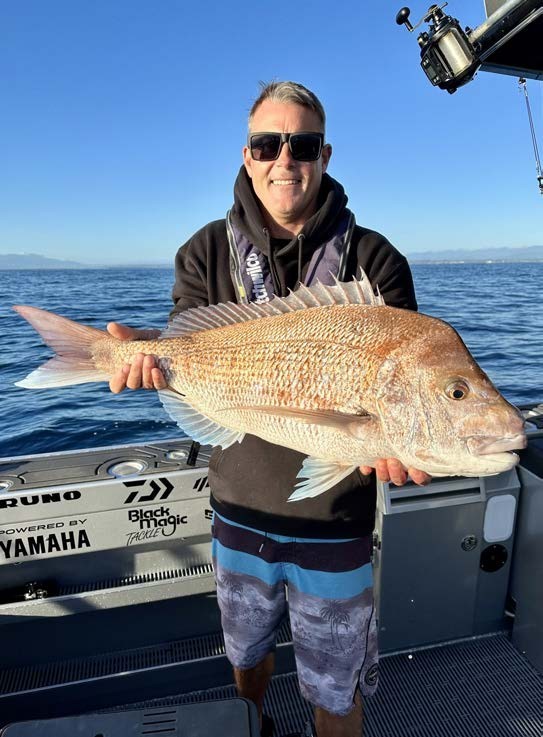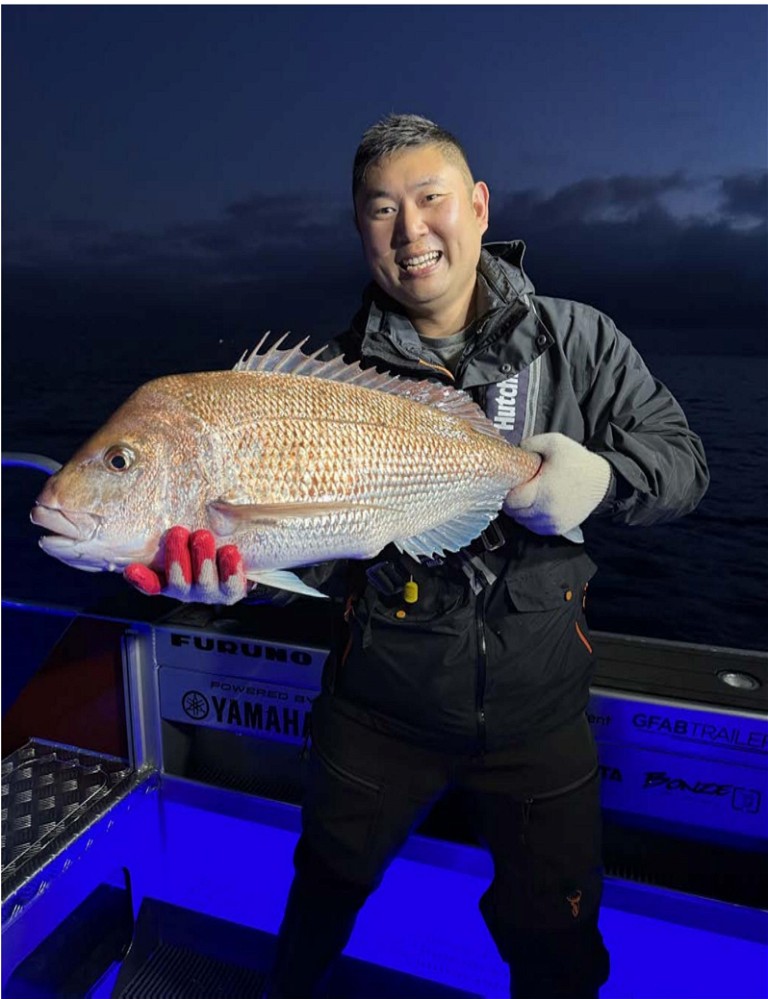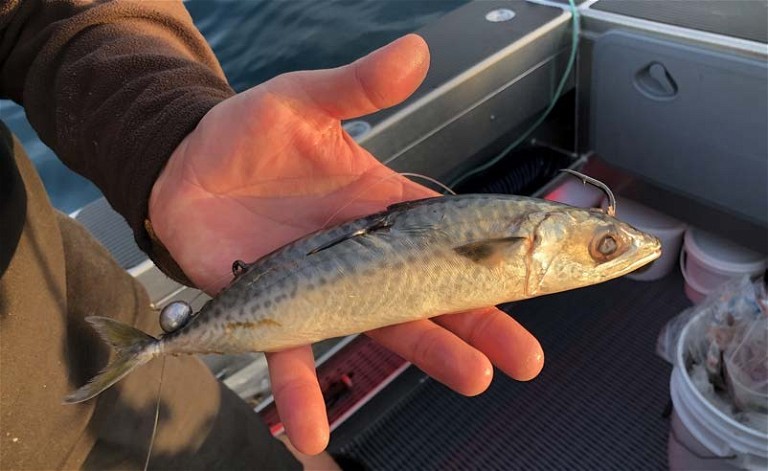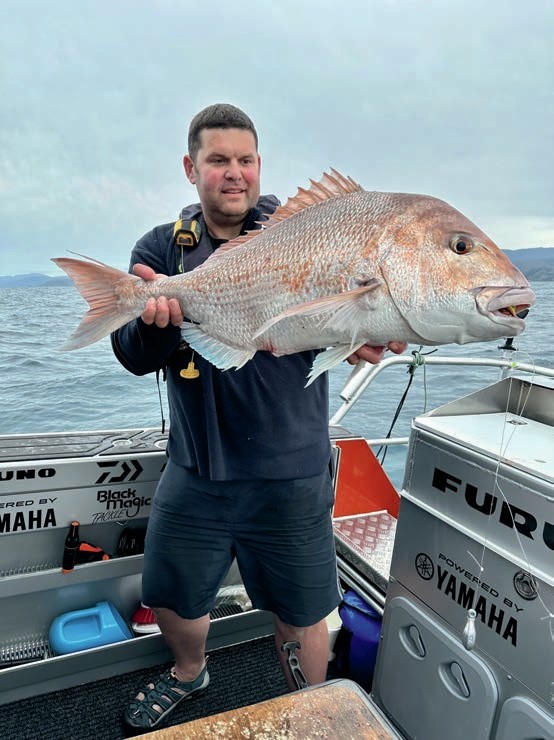VISITORS GUIDE TO THE TOP OF THE SOUTH
By Dan Govier

The Nelson-Tasman region located at the top of the South Island is a visitor hotspot for both regional and international travelers. Whilst a lot of people drive into the region, particularly from Christchurch, many also fly. With around 80,000 visitors flying into Nelson between 15 December 2023 and 31 January 2024, the region has earned the status of one of the most popular destinations to visit across New Zealand. Add in the unknown number of visitors who will drive into the region and you can imagine the increase in numbers over the summer months will be significant.
Of those who drive into the region, a large number of boats also come with them, as the number of boats around the region, both on the roads and on the water, increases significantly over the summer period. Add to that a very healthy population of snapper in Tasman Bay and Golden Bay, and it is the recipe for a great summer holiday. However, not everyone has success out on the water whilst on holiday, especially if they are visiting a region that they are not too familiar with, so this piece will hopefully help with the fishing and improve your time in the ‘Top of the South’. This information may even be useful for locals as well.
The Nelson-Tasman region is spoiled for choice when it comes to access to the sea, with launching ramps and beach access points spread across Tasman Bay and Golden Bay. I know of 16 boat ramps or beach launching locations from French Pass to Farewell Spit, which not only spreads the boats out, but enables safe launching to access the water depending on what the weather is doing.
For the last several years the snapper population has been increasing in the Top of the South, not only in numbers but also in size. During the last quarter of 2023, I would say most of the snapper I have caught are in the 60-70cm size class and they are in great condition.
In mid-December, water temperatures reached just over 180C which is often the threshold for snapper to start spawning, and as I write this many snapper have spawned. Snapper are serial spawners, so they can spawn over a number of occasions, which helps spread the risk as the survival of their eggs is related to environmental conditions such as water temperature.

A beautiful 20-pounder from the Top of the South.
What normally happens towards the end of December is that the fish can go off the feed after spawning and this generally coincides with an increase in boats out on the water; however, for those who are prepared to put the effort in, they can still be caught. The fish will still feed, it is just a matter of being in the right place at the right time, and you certainly don’t catch any snapper in front of the TV. You also don’t necessarily have to own a boat to experience some of the great snapper fishing that is around, with a lot of fish being taken by surfcasters and kayak fishers. February through to April can provide some fantastic fishing in the Top of the South and there are often some very good fish caught.

Graeme ‘Bonze’ Fleet with a prime Tasman Bay snapper.
Many important parts need to align to enable success out on the water, but weather conditions would have to be the most important part to catching fish. If the weather is not favourable, the boat will swing on the anchor and if the boat is rocking and pitching quickly, baits are not presented well to the fish below. Tasman Bay and Golden Bay don’t get a lot of large swells due to the limited fetch or distance of water that the swell can build, but the short sharp wind chop that can quickly appear is not pleasant and is even worse if the wind direction is against the tide.

Early starts often pay dividends.

Prime moocher snapper bait – a whole blue mackerel on a strayline rig.
The tidal range in the Top of the South is the largest in the country, which can be well over 4 metres during spring tides following the new or full moon and these play a part in not only the fishing but in how comfortable the fishing is. I know you cannot always have it this way, but ideally you want to have the wind and tide in the same direction. In the morning, you will often get a land breeze going out of Tasman Bay, which is effectively a southwest wind. If you can time the morning fishing with an outgoing tide, the boat will sit much better and you will find the fishing not only more enjoyable but probably more successful as well.
The same goes for afternoon/evening fishing. Like most places around New Zealand, a sea breeze is normally present from about lunchtime, so if conditions enable an evening fish, ideally you want to have an incoming tide as well. I am not saying you can only fish in these conditions; you will still catch fish with an incoming tide and a land breeze present, it is just something to consider to make the fishing more enjoyable and, from what I have found, more successful. In most cases when you have opposing wind and tide, the boat will sit side on and can be quite uncomfortable with the short choppy sea, and boat noise increases from waves hitting the side of the boat.
The weather in Tasman Bay can be quite different from what the weather is doing back in town as well. Port Nelson has a very useful website page that shows conditions both inside and outside Nelson Haven. The readings that you should look at are called “Fairway Beacon: Wave & Wind,” as this is the Fairway Beacon outside the Haven and has a weather station on it. This shows swell height, swell period, wind direction, wind strength and wind gusts. You will be amazed at how different the readings can be between the sheltered port and out at the Fairway Beacon.
Being out on the water at the right time of the day is vital. Having good tidal flow is also important, because the fish like the tide to be running for feeding, and you will often find the fish will stop feeding over the slack tide period. Fishing over the change of light is a great way to maximise your success out on the water and if you can align this with a running tide, the chance of success will certainly increase. Some mornings, as soon as the light hits the sky, the dinner bell sounds and the snapper will feed hard at this time. These feeding periods can be quite short, so being out on the water at that time gives you the best chance of finding some fish.

The simple flasher rig is very effective in Tasman Bay.
Snapper in Tasman Bay and Golden Bay are often in schools, and if you get one, you normally catch another. So when you do catch a snapper, it is best to get your bait back down to the bottom as quickly as possible to keep the fish in the area. If you can keep the fish on the feed that is the ideal situation, and it may be a bit frantic but you just don’t know how long the feeding activity will last. On some days the bite might only last for 30 minutes before the fish stop feeding.
The seabed within Tasman Bay and Golday Bay is relatively flat and featureless. There is very little reef structure other than around the margins, and it is comprised largely of muddy/ sandy sediments. So there is no one particular area that holds fish more than others, and just because you see a boat anchored, it does not necessarily mean they are in a good location and you should fish right beside them – that is just where they chose to fish. There needs to be a bit of boating etiquette out on the water as well when there are a lot of boats around, so make sure you don’t go and fish too close to another boat or in their berley trail. As I said, there is nothing particularly important they are sitting on, so 500 metres away is no different to right beside another boat – aside from saving you annoying your fellow boaties. Snapper within Tasman Bay and Golden Bay move around a lot, so generally you don’t find the fish, the fish find you. Patience is key in most cases – if you know there should be fish in the area, stick there and wait until they find you, rather than moving every 30 minutes like some boats do just because they are not catching any fish.
Having the right gear to catch the fish is also important. The days of short, heavy rods are gone, and with the improvements in technology you can now use very light rods and reels with thin braided line and not only have great success but also enjoy the experience as well by getting a good fight out of the fish.
Flasher rigs are deadly for catching snapper in Tasman Bay. Pilchards are my go-to bait for the summer months, and I use cubes of pilchard on flasher rigs and the snapper seem to love them. I will normally cut the head and tail off and throw them over for berley, and then cut the remaining pilchard in half with one piece on each of the two hooks. Make sure the point of the hook is exposed as well - you don't want to bury the hook in the bait, otherwise it limits the hooking potential. I don't use a lot of squid over summer, but I know others use it with good success and it does stay on the hook a bit better than pilchards in most cases. Squid seems to work better later in the season, say from January/February onwards.
I will also use a strayline rig for snapper at the same time I am using flasher rigs, and you will often find the strayline is the first to catch a fish. My thoughts on this are that the fish will often hang back behind the boat to start with, particularly early in the morning just before the change of light, before they move in closer to be taken on the flasher rigs. Avoiding as much noise as possible on the boat I believe is very important, especially for those of us in aluminium boats, as this then allows the fish to come in closer to the boat without being as wary.
Try to avoid dropping sinkers or banging them on the side of the boat when you bring your line up, as the noise increases significantly underwater. The strayline rig I use is a double circle hook rig, often around 5/0-7/0 size depending on the size of the bait. I will snood both hooks onto the trace so they are fixed, and again the distance between the hooks is based on the size of bait I am likely to use.
Whole pilchards, squid, blue mackerel and anything fresh are my go-to for strayline bait. Catching fresh bait can help increase fishing success significantly, and most days I will put in the effort to catch fresh bait to complement the pilchards I have. The fresh bait that you can expect to catch in the Top of the South includes, kahawai, barracouta, jack mackerel, blue mackerel, pilchards and piper. With the tidal flows that are present, I will normally half hitch a 0.5oz sinker into the bait to help it sink, and this also helps take the bait out of the surface waters quicker, avoiding the chance of hooking one of the many seabird species that will often be present around the boat.
To catch fresh bait in Tasman Bay, berley is very helpful. You can often catch bigger fish such as kahawai and barracouta on the same rigs you are targeting snapper on, but to increase your selection, sabiki rigs are the way to go.
Hopefully this information on how I fish and the rigs I use along with the weather and tidal conditions I look for is of use, and it helps with your time out on the water in the Top of the South. Enjoy your time in the stunning Nelson/Tasman region, it is a great place but please respect our fishery, take only what you need and also respect other users out on the water. There is plenty of space and fish for everyone. Be patient over the summer period as the boat ramps will be busy, and at the end of the day everyone's goal is the same -they just want to get out on the water, catch a feed and create great summer memories with friends and family.